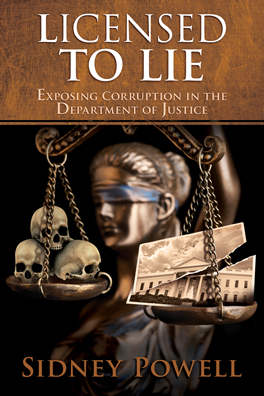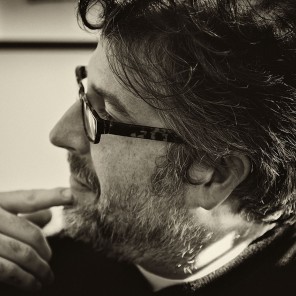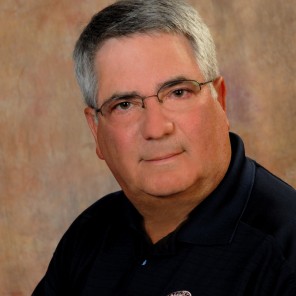Ninth Circuit Believes in Brady & Enforces It Again

Another panel of the United States Court of Appeals for the Ninth Circuit hits a home run for the Constitution! After failures of every prior state and federal judge to act in the face of clear evidence, the Ninth Circuit has reversed a denial of a writ of habeas corpus and required release - or a new trial - for a criminal defendant because of a prosecutor’s Brady violation.
Authored by Circuit Judge William Fletcher for the panel including Circuit Judge Harry Pregerson and District Judge Mark Bennett (all pictured), the panel held (emphasis added) :
Gilbert Aguilar was convicted of first-degree murder after a jury trial in Los Angeles County Superior Court. A young Hispanic man got out of a white Volkswagen Beetle and shot John Guerrero while Guerrero’s car was stopped at a stoplight. The only question at trial was the identity of the shooter. Aguilar’s defense was that another young Hispanic man, Richard Osuna, had shot Guerrero.
The prosecution introduced evidence that a police dog named Reilly had alerted to a “scent pad,” showing that Aguilar’s scent was present on the
front passenger seat of the white Volkswagen.

The prosecution did not disclose to the defense that Reilly had a history of making mistaken scent identifications,
even though it had stipulated to Reilly’s mistaken identifications in a different trial several months earlier.
Following the stipulation, that court had excluded evidence of Reilly’s scent identification from the earlier trial.
Reilly’s scent identification was the only evidence that tied Aguilar to the white Volkswagen.
Putting the scent identification to one side, the evidence against Aguilar was weak. No clear motive for Aguilar to shoot Guerrero was ever suggested at trial. No physical evidence tied Aguilar to the crime. The faces of Aguilar and Osuna are very similar, but Aguilar is older and, at the time of the shooting, was significantly taller. A number of eyewitnesses identified Aguilar as the shooter at trial. Several of those witnesses had earlier given a quite different physical description to police – one that matched Osuna in age and height rather than Aguilar.
The evidence suggesting that Osuna was the killer was substantial. Osuna’s brother was shot several days before Guerrero was shot. Two witnesses testified that Osuna jumped into a white Volkswagen Beetle to pursue Guerrero’s car as it drove past. One of them testified that Osuna did so in the belief that the “fools” in the car had shot his brother. That same witness testified that Osuna told her a short time later that he had shot a “fool.” Even so, Osuna was never investigated as a suspect in this case. Indeed, the prosecutor in this case expressly told the police not to pursue an investigation of Osuna.cantly taller. A number of eyewitnesses identified Aguilar as the shooter at trial. Several of those witnesses had earlier given a quite different physical description to police – one that matched Osuna in age and height rather than Aguilar.
Read on in the full decision and it only gets worse.
The police had jailhouse recordings supporting the defense. Defense counsel and a private investigator tried to get the police to investigate Osuna, but the prosecutor, Mike Camacho, now a Superior Court Judge in the same courthouse, said NO .
The fingerprints found in the car were not Aguilar’s, and the police did not even compare the prints found with Osuna’s.
None of the eyewitnesses knew Aguilar, and they were never shown a picture of Osuna to identify.
Former L.A. Public Defender Michael Judge wrote to L.A. District Attorney Steve Cooley (the prosecutor’s boss) shortly after the L.A. Superior Court excluded the same dog’s (Reilly’s) scent ID evidence in People v. White and told Cooley to inform defense counsel in all future cases involving Reilly that he had made mistaken IDs. D.A. Cooley didn’t do that.
The prosecutor capitalized on the information he withheld. The jury deliberated for 4 days, asking numerous questions, before it finally convicted Aguilar, resulting in a sentence of 50 years. The jury even expressed concern that Osuna had not been investigated.
The California Court of Appeals denied his motion for new trial and habeas application in one fell swoop. Even though it questioned the validity of the “dog scent” evidence, that court held it was not “material.”
That sounds horribly familiar. It’s the government’s mantra and far too many courts buy it-even when it’s obvious prosecutors deliberately hid evidence that they had yellow-highlighted as Brady before the trial but excised from court-ordered “summaries.” See the Fifth Circuit’s painfully wrong decision in US v Brown (5th Cir. 2011), holding that federal prosecutors “plainly suppressed” evidence favorable to the defense, but it didn’t matter (even though the prosecutors argued the opposite to the jury 16 times in closing argument alone). It apparently didn’t matter enough toour friends on the Fifth Circuit, but it sure was material under anyone else’s standard-including the Ninth Circuit’s. Making matters worse, those prosecutors who “plainly suppressed” favorable evidence in Brown are now Chief White House Counsel Ruemmler, former Acting Deputy Attorney General Friedrich who also micromanaged the corrupt prosecution of former United States Senator Ted Stevens, and Deputy Director of the FBI Weissmann. Now, back to the Ninth Circuit . . .
The California courts failed to find a Brady violation. The federal magistrate judge failed to find a Brady violation and denied Aguilar any rel’s writ. United States District Judge David Carter simply rubber-stamped that decision and in addition, denied Aguilar a certificate of appealability.
Defense counsel appealed the denial of the certificate of appealability. The Ninth Circuit granted a certificate of appealability and then heard the case. It would have been so easy for them to have simply denied the certificate, but someone paid attention and cared.
Despite applying a “highly deferential standard of review,” the panel held that the prosecutor’s failure to disclose the history of erroneous scent identifications was a Brady violation, and the California Court’s failure to recognize that was an “unreasonable application of Brady.”
“Any evidence that would tend to call the government’s case into doubt is favorable for Brady purposes.” Milke v. Ryan, 711 F.3d 998, 1012 (9th Cir. 2013).
The Ninth Circuit also criticized the California Court of Appeals for misstating the strength of the eyewitness testimony, and the state for claiming evidence that it relied on so heavily at trial was not probative (material).
To read the entire, thorough decision in Aguilar v. Woodard, click here. We are adding these three Judges to our WALL of FAME-for doing a lot of homework and getting it right. And kudos also to defense attorney Neil Rosenbaum of San Francisco who perservered.
Will this former prosecutor-now State Judge-or his District Attorney who was on written notice of the unreliability of the dog and failed to disclose it, be disciplined by the California Bar? They certainly should be.
And, until we get legislation that requires all prosecutors to produce evidence favorable to the defense or suffer significant consequences for their illegal and unethical conduct, whether an innocent person spends time in prison while the guilty go free depends on which judge or judges a defendant happens to get-or which Circuit he appeals to. That is just plain wrong.













1 Comment
THANK GOD THE TRUTH HAS FINALLY CAME OUT. NOW I CAN ONCE AGAIN PUT TRUST IN THE SYSETM.